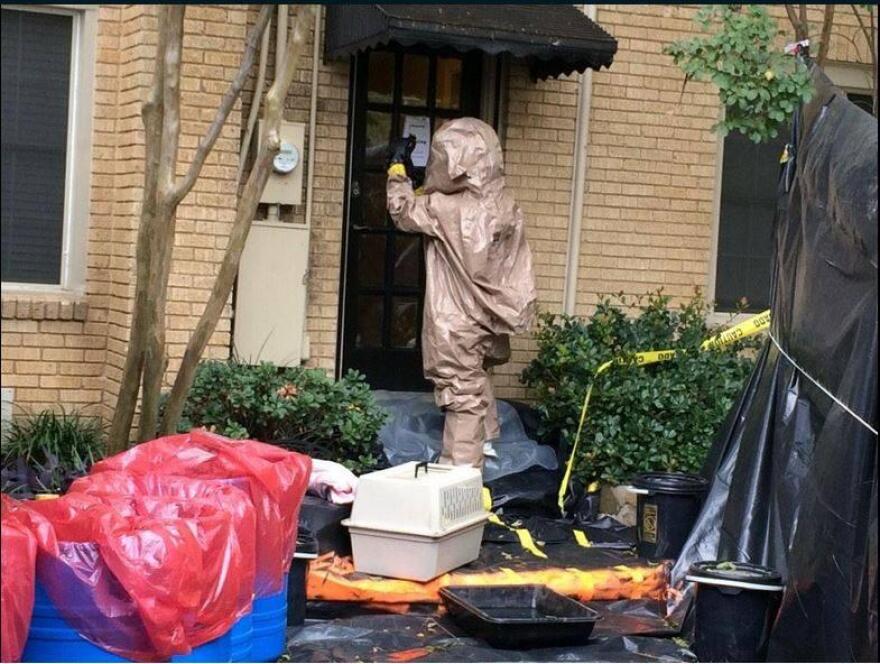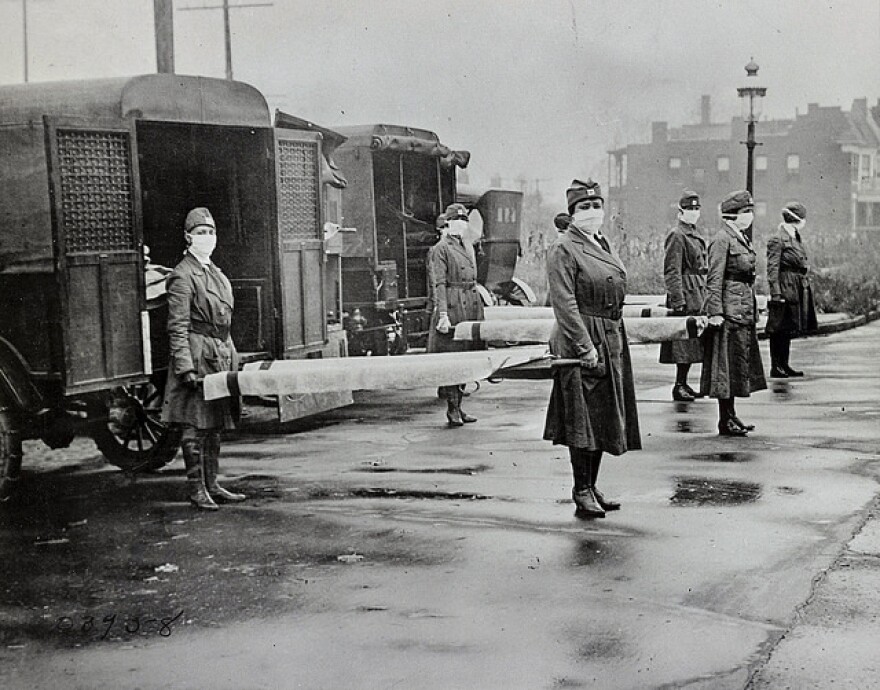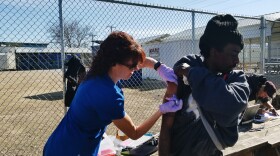This flu season is making regular headlines, especially in North Texas, where more than 100 people have died. It doesn't compare to the flu crisis the world endured a century ago, but we can still learn from it.
Some experts estimate about one-third of the world's population came down with the flu in 1918, and from 50 to 100 million people died.
Carolyn Smith-Morris, a medical anthropologist at Southern Methodist University, said people were living in fear and panic during this time.
"What we saw then is, in my work, something that we're likely to see [again] should we have a pandemic today," she said. "There are many differences from 1918, but the similarities are in the social reactions — how humans deal with fear."
Smith-Morris will give a lecture on Thursday on the 1918 flu pandemic and the similarities it has with the Ebola outbreak Dallas experienced just a few years ago. (Learn more about the lecture here. Reservations are requested.)
Listen to her interview and read highlights below.
Interview Highlights: Carolyn Smith-Morris
Interview responses have been edited lightly for clarity.
On what it was like to live during the pandemic:
When the flu broke out in any given area, it was nothing out of the ordinary. It was when these massive movements of people around the world started showing; cities being decimated by fast-moving infections that this panic set in. This was a function, of course, of World War I. We saw enormous numbers of young, healthy people moving around the globe, and yet they were coming down with this deadly disease. So it was that movement of people, the close proximity, the crowding, and these were the things that people were seeing and thinking — not so much about crowds at the time — but young people falling victim quickly to this new epidemic.
On the similarities between Ebola in Dallas in 2014 and the Flu Pandemic of 1918:
We don't have great treatments or a vaccine for Ebola. So it was a good opportunity to see how people respond to epidemic threats. Now, we have robust public health infrastructure. Given all the things that have changed since 1918, we wanted to see what might still be the same.

We interviewed residents in two different neighborhood in Dallas, each of which had one of the victims of Ebola. Since Ebola was an infectious disease and proximity to a victim would likely be perceived as a threat, we thought that these neighborhoods would be stigmatized evenly or similarly. And what we found was that people who had moved to the U.S. or to Dallas years ago, even a decade, were feeling threatened in their jobs. They would hide their identity and their accent, and they were feeling worried over, or even scared from, the 24-hour television vans and photographers who were parked outside.
Just like in 1918, this is an important reminder about how humans make sense of threats. We still stigmatize others, we still see risk in the same ways we did in 1918 through some sweeping generalizations.
On the fight-or-flight response to pandemics:
Fight-or-flight is something that we were evolved to do. It is a biochemical event. Fear is a real and biochemical and health event that we must acknowledge; we can't just talk people out of it. Until we have a perfect health world, we will not have perfectly calm people. We also won't have perfectly informed people. We won't have perfect access to care.
Smith Morris will give a free, public lecture, "The 1918 Flu Epidemic: A 2018 Perspective," at 6 pm. Thursday at the Gene and Jerry Jones Great Hall in SMU's Meadows Museum. (Learn more about the lecture here. Reservations are requested.)
Explore's KERA's in-depth multimedia project on the Ebola outbreak in Dallas.






